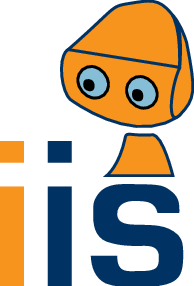datasets:ior
Differences
This shows you the differences between two versions of the page.
| Both sides previous revision Previous revision Next revision | Previous revision | ||
|
datasets:ior [2016/04/21 16:27] c7031007 |
datasets:ior [2018/09/03 19:35] (current) |
||
|---|---|---|---|
| Line 1: | Line 1: | ||
| ==== Innsbruck Object Relation Dataset ==== | ==== Innsbruck Object Relation Dataset ==== | ||
| - | This dataset contains the set of possible object-object spatial relations. Learning object-object relations is a difficult problem with sparse, noisy, corrupted and incomplete information which makes it an interesting and challenging machine problem. We treated this problem as the learning missing edges in a multigraph problem. | + | This dataset contains the set of possible object-object spatial relations. Learning object-object relations is a difficult problem with sparse, noisy, corrupted and incomplete information which makes it an interesting and challenging machine learning problem. We formulate this problem as the problem of learning missing edges in a multigraph. |
| - | **Keywords**: missing link prediction, data inputation, matrix completion, recommender systems, low-rank approximation | + | **Keywords**: missing link prediction, data imputation, matrix completion, recommender systems, low-rank approximation |
| Line 9: | Line 9: | ||
| The learning scenario based on which this database was created is a toy clean-up task in a room of kids, where an | The learning scenario based on which this database was created is a toy clean-up task in a room of kids, where an | ||
| - | agent needs to plan how to transform a messy child's room into a tidy one by moving objects to their storage locations and creating order. An agent can integrate knowledge on possible spatial relations of objects into the planning process and use it to re new the world model. Large numbers of objects and their potential interactions in this scenario make this task a large-scale problem. Estimating the missing relations based on those already known can accelerate planning procedures. | + | agent needs to plan how to transform a messy child's room into a tidy room by moving objects to their storage locations and creating order. An agent can integrate knowledge of possible spatial relations of objects into the planning process and use it to update the world model. Large numbers of objects and their potential interactions in this scenario make this task a large-scale problem. Estimating the missing relations based on those already known can accelerate planning procedures. |
| {{research:projects:squirrel:table.png?300}} {{:research:projects:squirrel:drawing.png?300|}} | {{research:projects:squirrel:table.png?300}} {{:research:projects:squirrel:drawing.png?300|}} | ||
| Line 16: | Line 16: | ||
| **Dataset Features** | **Dataset Features** | ||
| - | *Dataset is generated based on the [[http://shape.cs.princeton.edu/benchmark/|Princeton Shape Benchmark database]] | + | *The dataset is based on the [[http://shape.cs.princeton.edu/benchmark/|Princeton Shape Benchmark database]]. |
| - | *Dataset contains 4 sets for the each possible connection between objects (//in//, //on//, //below// and //next to//). The problem is formulated that all possible relations should be treated so two objects can have mulitple connections. | + | *The dataset contains one table, indexed by object pairs, for each of the object-object relations //in//, //on//, //below// and //next to//. |
| - | *Links between objects are determined by values: | + | *Relations between objects are represented by the following values: |
| - | ***0** - no connection | + | ***0** - no relation |
| - | ***1** - direct connection | + | ***1** - forward relation |
| - | ***-1** - reverse connection | + | ***-1** - reverse relation |
| - | ***empty** - unknown connection | + | ***empty** - unknown relation |
| - | * You can downlaoad dataset [[https://iis.uibk.ac.at/public/databases/esann2015/|here]] | + | * You can download the dataset [[https://iis.uibk.ac.at/public/databases/esann2015/|here]]. |
| **Reference** | **Reference** | ||
| - | "//Learning missing edges via kernels in partially-known graphs//", Senka Krivic, Sandor Szedmak, Hanchen Xiong, Justus Piater, European Symposium on Artificial Neural Networks, Computational Intelligence and Machine Learning 2015. [[https://iis.uibk.ac.at/public/papers/Krivic-2015-ESANN.pdf|PDF]] | + | Please cite this paper if you use this dataset: |
| - | Please cite this paper if you are using this dataset. | + | <html> |
| + | <div class="li CONF" id="Krivic-2015-ESANN" title="Krivic-2015-ESANN"><p><span class="author"><span class="firstname">Senka</span> <span class="surname">Krivić</span></span>, <span class="author"><span class="firstname">Sandor</span> <span class="surname">Szedmak</span></span>, <span class="author"><span class="firstname">Hanchen</span> <span class="surname">Xiong</span></span>, <span class="author"><span class="firstname">Justus</span> <span class="surname">Piater</span></span>, <span class="parttitle">Learning missing edges via kernels in partially-known | ||
| + | graphs. </span><a href="https://www.elen.ucl.ac.be/esann/">European Symposium on Artificial Neural | ||
| + | Networks, Computational Intelligence and Machine | ||
| + | Learning</a>, <span class="pubdate">2015</span>. <span class="actions"> <a href="https://iis.uibk.ac.at/public/papers/Krivic-2015-ESANN.pdf">[PDF]</a> <a href="javascript:void(0)" onclick="showHide('Krivic-2015-ESANN', 'Abstract')">[Abstract]</a> <a href="javascript:void(0)" onclick="showHide('Krivic-2015-ESANN', 'BibTeX')">[BibTeX]</a></span></p></div> | ||
| + | </html> | ||
| - | **BibTex** | ||
| - | |||
| - | @InProceedings{Krivic-2015-ESANN, | ||
| - | title = {{Learning missing edges via kernels in partially-known graphs}}, | ||
| - | author = {Krivi\'{c}, Senka and Szedmak, Sandor and Xiong, Hanchen and Piater, Justus}, | ||
| - | booktitle = {{European Symposium on Artificial Neural Networks, Computational Intelligence and Machine Learning}}, | ||
| - | year = 2015, | ||
| - | url = {https://iis.uibk.ac.at/public/papers/Krivic-2015-ESANN.pdf} | ||
| - | } | ||
| **Acknowledgement** | **Acknowledgement** | ||
| - | This research has received funding from the European Community’s Seventh Framework Programme FP7/2007-2013 (Speci c Programme Cooperation, Theme 3,Information and Communication Technologies) under grant agreement no. 610532, [[http://www.squirrel-project.eu/|Squirrel]] and no. 270273, [[http://www.xperience.org/|Xperience]]. | + | This research has received funding from the European Community’s Seventh Framework Programme FP7/2007-2013 (Specific Programme Cooperation, Theme 3,Information and Communication Technologies) under grant agreement no. 610532, [[http://www.squirrel-project.eu/|Squirrel]] and no. 270273, [[http://www.xperience.org/|Xperience]]. |
| **Contact** | **Contact** | ||
| [[senka.krivic@uibk.ac.at]] | [[senka.krivic@uibk.ac.at]] | ||
datasets/ior.1461248848.txt.gz · Last modified: 2018/09/03 14:57 (external edit)

